What to Consider When Implementing A Fire Monitoring Service
Fire safety systems should be tailored to your building’s unique needs, integrate seamlessly with your security setup, and provide reliable,...
 |
Fire protection professionals committed to safeguarding lives, property, and peace of mind. |
 |
Solutions designed for your property type, from multi-family housing to healthcare facilities to retail spaces. |

|
Fire alarm, area of refuge, camera, and card access monitoring services. |
 |
Clear communication and instant response when every second counts. |
 |
From kitchens to server rooms, the right protection for every space. |
 |
Keep your primary defense system ready and reliable. |

|
Manage all your properties' access from one simple platform. |
 |
Monitor multiple properties in real time from anywhere, at any time. |

|
Document upcoming maintenance appointments and improve your proactive budget planning. |
 |
Fire Extinguisher Maintenance Checklist Learn the requirements for testing extinguishers monthly, annually, and beyond. |

|
Track all your inspection deadlines in one place. |
 |
Kitchen Hood Inspection Checklist Ensure your kitchen hoods are safe and compliant. Download a complete list of testing requirements. |

|
Guide to Fire & Security Monitoring Your complete property protection handbook in practical terms. |

|
Running a food truck takes work—this guide gives you the tools to keep it safe and up to code. |
 |
Comprehensive Guide to NFPA 13 and NFPA 25 Fire Sprinkler Systems Navigate sprinkler system requirements with confidence using our straightforward guide to codes and maintenance. |

|
Get your essential compliance guide. |
 |
When reliability matters across 18 restaurants, micromanagement doesn't. |
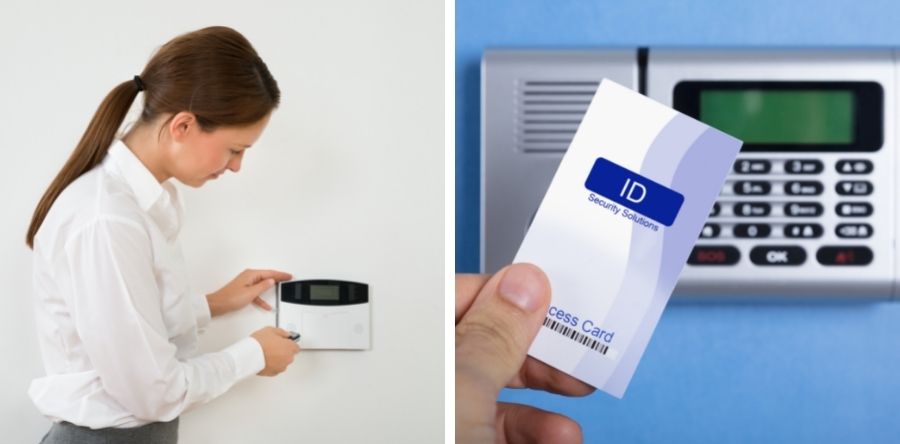
Unlike standards for fire safety, such as code requirements and certification, there are no standards for access doors. Instead, administrative oversight of access and keeping track of comings and goings are essential to the safety and security of people and property.
The robustness of your access system and ability to manage it effectively have variable factors. To sort through these issues, this blog will study door access, “tools of the trade,” and vulnerabilities. First, evaluating door access takes careful thought and evaluation, such as:
No matter what the door access level or needs are, an up-to-date plan is key. (Pardon the pun.) Components include:
Every industry has different requirements for door access based on protocols and policies of their risk management. Let’s take a closer look at these unique needs.
Senior Living – The level of access and control is set by management which administers the access. For example, independent living access needs are different than memory care. Staff have different levels of access based on their positions, work hours and areas of responsibility. Door access options include keys for external and internal doors where there is a vestibule in between, and use of cards, FABs or keypads elsewhere.
Memory Care – The nurses’ call station usually handles all the comings and goings. When a patient tries to leave, the outside door is locked. If there is a fire emergency, the nurses’ station is deactivated so that people can get out, but that also means that residents may take advantage of the situation. It’s vital to have a safety plan that includes door access, as well as an evacuation plan
Airports – On average, over 40,000 employees have access to the security sensitive areas of airports across the country, such as general employees, airline hangar tenants, vendors, contractors and ground transportation. That’s considerable activity and a lot to keep track of. In most cases, employees have an ID badge with a card/FAB to specific areas they can access. Lost, stolen or misplaced badges must be deactivated and replaced, but are not always reported.
Schools – Door access is different for private schools and public schools. For instance, public school doors are usually open during school hours. Yet not every door needs to be open during events, sports or evening hours, so evaluation is necessary.
Private schools, however, are sometimes locked during class hours. They use either the same access code, cards or FABs for all the students. The negative for using codes is that they can be easily shared with people who should not have access. Access cards and FABs can be lost or misplaced. Someone could find a lost one and gain access when they don’t have authorization to be there. Sharing cards and FABs are also security issues. Assigning codes to service vendors is another layer of access use, and, unfortunately, misuse.
An additional private school vulnerability is doors can be physically pried or propped open, which should set off an alarm. Doors should be tested at least once a year to make sure the system is working properly. Prop the door open; if it doesn’t set off an alarm, then the system isn’t working and, obviously, needs to be fixed.
Schedulers need to be aware of holidays. Some happen every year, like Christmas and July 4th. Floating holidays (e.g., Thanksgiving, Martin Luther King Jr. Day) are scheduled differently within access systems. Each year take time to synchronize door access based on the school calendar.
The one thing that all businesses have in common is any breach of access can cause vulnerabilities to the people and places being protected by the system. Code, card and FAB access are great, but only as great as the people who use it and administer it.
Accept the fact that breaches in door access security WILL happen eventually, so be prepared. Everyone who has been given access is required by law to report it immediately. But it’s quite common that people don’t. As a result, access devices are out there that have not been accounted for. You need to have a plan in place to address the breaches and act quickly.
I know door access is a lot to think about, and you have questions and concerns. Brothers Fire & Security will help you sort through your door access security needs, policies and options. Give us a call at 800-607-2767 and we’ll set up a free evaluation to determine the next step.
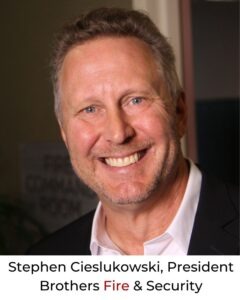 About Brothers Fire & Security
About Brothers Fire & SecurityAs one of the premier providers of fire and security solutions in the Upper Midwest, Brothers Fire & Security strives to build long-term, value-added relationships. We work with business owners and property management companies, as well as all types of public institutions to solve fire and security needs. By taking advantage of our integrated bundled services, many of our clients find that they can save 25-30% on their safety services, annual inspections and more. From a single location to franchises throughout the region and the country, our integrated approach saves our clients valuable time, money, and stress. We provide fire protection systems, security systems, fire sprinkler systems, fire alarm systems, 24-7 monitoring, fire extinguishers, card access and kitchen hoods. We also provide our Online Academy: Life Safety — Made Simple with eLearning courses designed to help you get and keep your staff trained and your business fire and security code compliant.
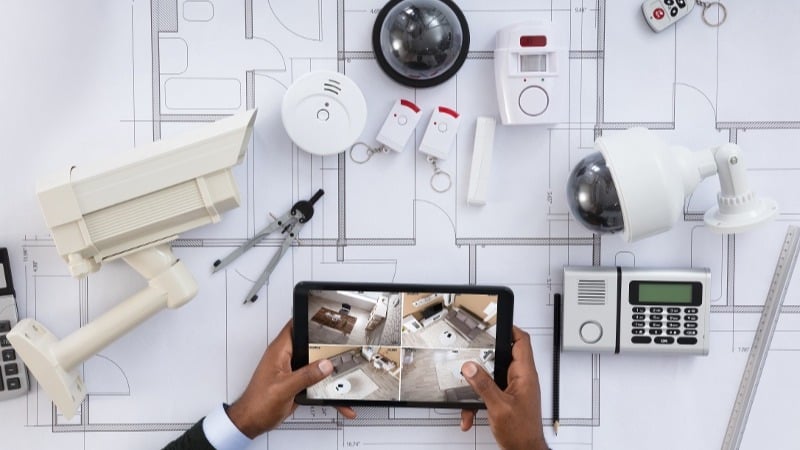
Fire safety systems should be tailored to your building’s unique needs, integrate seamlessly with your security setup, and provide reliable,...
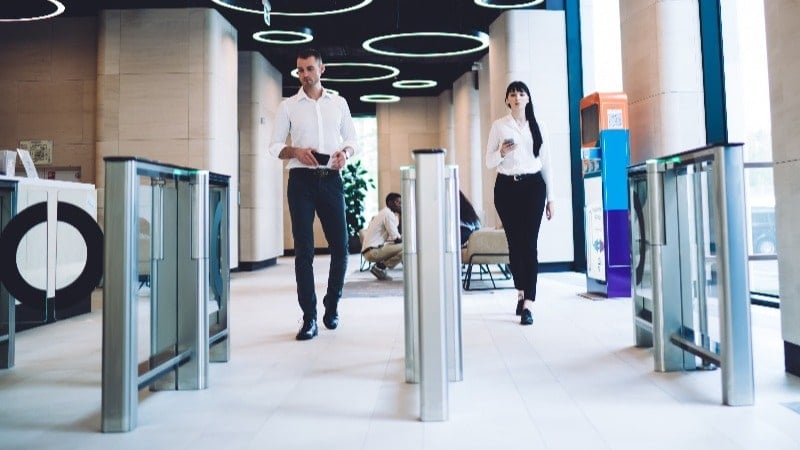
You’ve invested in a security system for your business. You may assume that your needs are sufficiently covered. But keeping your business safe...
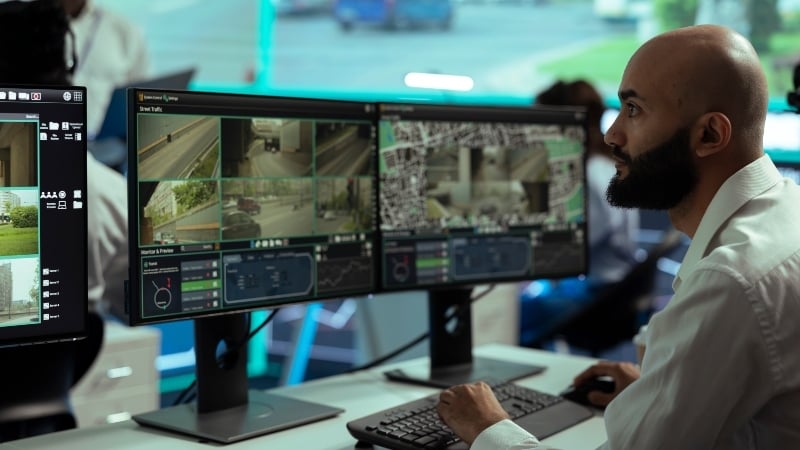
As your business grows from one location to multiple sites, security becomes trickier. You might initially try managing everything in-house, to save...